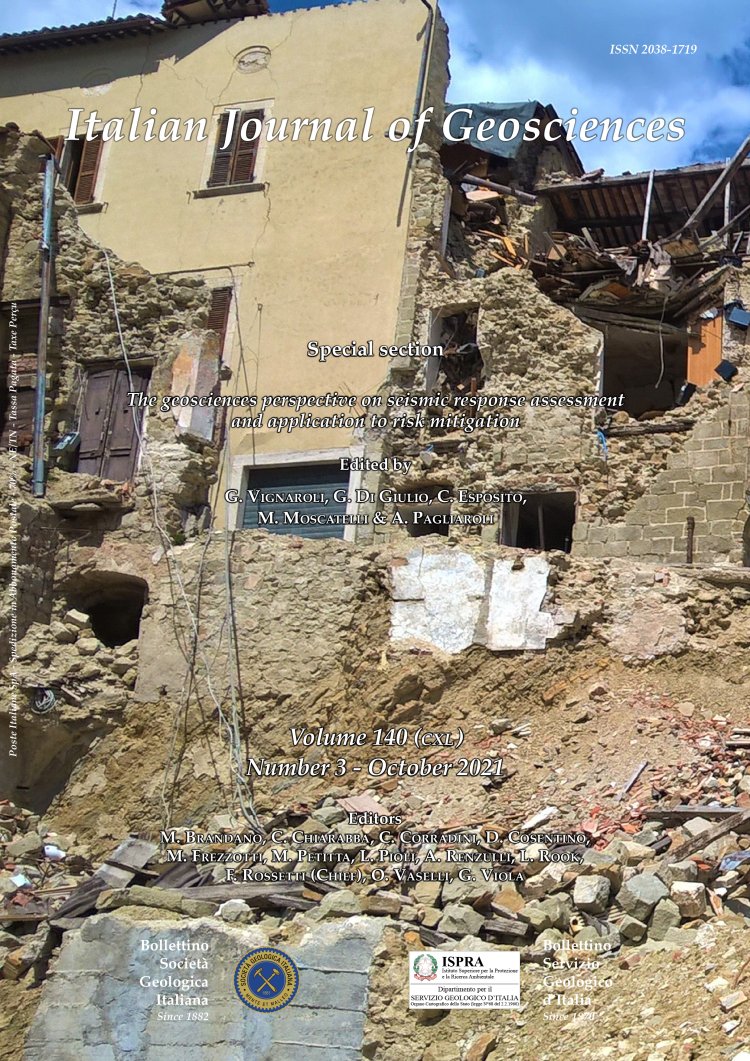
Evaluation of building seismic retrofitting costs founded on experimental data. The case study of "San Benedetto" School (Norcia, Italy)
Gaetano Falcone (1), Vitantonio Vacca (1,2), Federico Mori (1), Giuseppe Naso (3) & Daniele Spina (3)
(1) CNR-IGAG, Istituto di Geologia Ambientale e Geoingegneria, Area della Ricerca di Roma 1, Via Salaria km 29.300, 00015 Montero- tondo Stazione, Roma, Italy.
(2) ANAS S.p.A, Struttura Territoriale Basilicata, Via N. Sauro Snc, 85100 Potenza, Italy.
(3) Presidenza del Consiglio dei Ministri - Dipartimento della Protezione Civile (DPC), via Vitorchiano 2, 00189 Roma, Italy. Corresponding author e-mail: gaetano.falcone@igag.cnr.it
Volume: 140 (2021) f.3
Pages: 365-381
Abstract
Evaluation of seismic retrofitting costs, a key issue in the risk mitigation strategies, requires the estimation of the building performance and the forecast of the site response. In addition, a target building performance should be a priori defined. In this study, a procedure to provide seismic retrofitting costs is suggested with reference to a case study, based on what following: i) the building performance is described by fragility curves obtain via recorded data on the building itself (Seismic Model from Ambient Vibration - SMAV), ii) the local seismic site response is estimated by means of numerical one-dimensional simulation based on site-specific data or by means of simplified technical code approach, iii) the building performance and the site response are combined in order to obtained an Annual Frequency of Failure for each damage limit state, iv) this frequency is compared to the target allowable reliability level according to the classes of use and limit states of building in order to obtained a Vulnerability index, v) seismic retrofitting costs, depending on the Vulnerability index values, are evaluated from literature suggestions (caterino et alii, 2018). Finally, with reference to the case study of the “San Benedetto” school of Norcia (Central Italy), the proposed methodology is satisfactorily verified by comparing the forecast with real costs. The innovative aspect of the proposed methodology lies in the use of the recorded data and SMAV model and in the procedure for defining the local seismic response which considers the building- specific characteristics and the site-specific conditions
Keywords
ambient vibration, fragility curve, total seismic response, local effects, structural retrofit, seismic risk mitigation.
Get Full Text